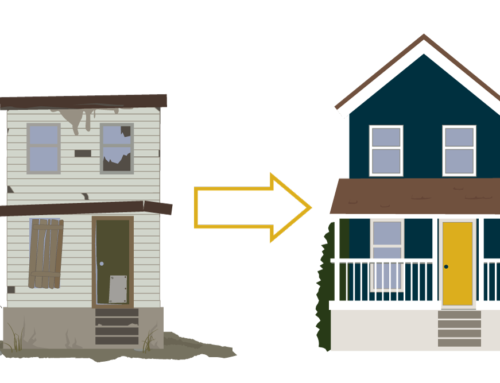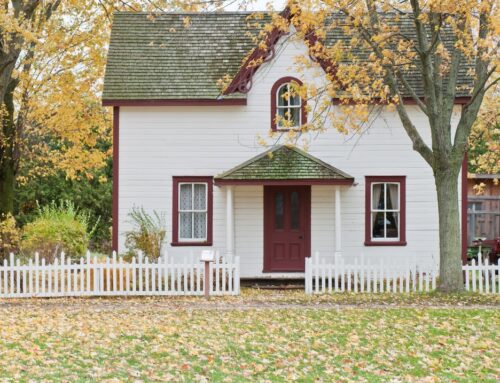
Female Hands Framing Gradated Custom Kitchen Design Drawing and Photo Combination.
It’s no secret that there is plenty of money to be made in the real estate market, especially in its current state.
Due to the COVID-19 pandemic, there has been a shortage of inventory in the home-buying market. Couple this with a greater number of families looking to move out of cities and into residential areas—and it’s easy to see why homes are selling for record prices across the country.
But there’s one problem—oftentimes, coming up with the capital necessary to complete such a project can be difficult. This is where fix and flip loans for beginners come into play.
It does require a bit of research, as not all lenders are equal. But with the right lending partner, you can secure financing to invest in a fixer-upper property, to then sell for a high profit.
This can be the key to financial freedom, with an amazing opportunity for exponential growth.
Keep reading for more information on fix and flip loans for beginners!
What Is a Fix and Flip Loan?
One of the most profitable investments you can make—especially as a beginner—is real estate.
This is especially true for flip homes, in which you purchase a run-down property and renovate it. From there, it can be sold for huge profit margins. In a seller’s market like we are experiencing today, the potential for huge profits is undeniable.
Fix and flip loans make these investment opportunities possible. These funds are designed to cover not only the cost of the property itself but the additional repair and renovation costs as well.
Generally speaking, these loans carry terms from anywhere from six to 18 months, although a 12-month term is the most common.
In Florida, Shepherd’s Finance is here to serve you in your first-time flipping experience. Our seasoned representatives are well-experienced and ready to answer any and all of your questions throughout the journey.
Once you are approved for the fix and flip loan, our funds are disbursed via direct deposit. This makes it easy for you to immediately begin putting those dollars to work in your project.
Fix and Flip Loan Eligibility
You may be wondering about the fix and flip loan criteria to gain approval. Luckily, you don’t have to jump through a million hoops just to get approved. There are a few main criteria to meet, in most cases.
First of all, you must provide various basic documents that would be required in nearly any loan of the same type. This includes:
- Your personal identification
- Identification for your business (if applicable)
- Sales contract for the property in question
- List of investment assets in your possession
- Documentation for previous similar projects (if applicable)
- Personal tax returns
- Business tax returns (if applicable)
- Estimation received from a licensed contractor, showing the rough cost of the renovation project
Additionally, you must show proof of experience in the vicinity in which you are looking to invest. This applies to all levels of experience—from the brand-new remodeler to a construction company-owner.
This does not mean first-time flippers will automatically be rejected. Rather, you must be able to demonstrate that you fully understand the time and effort required to successfully complete such a project.
You will also need to show proof of the necessary licenses that pertain to the project itself. If applicable, credit histories may be required as well. Furthermore, insurance coverage including builder’s risk insurance, general liability insurance, and flood insurance.
Beyond the eligibility of your own personal standing, you must be able to demonstrate the feasibility of the property itself. It must be a detached home, in a single-family style. A townhome can potentially work, as well—although condominiums are not allowed.
Furthermore, securing a fix and flip loan will require a boundary survey and a Lender’s Title Policy.
Luckily, investors who are truly committed to a quality (and profitable) investment flipping property should find no problem in satisfying these requirements.
Fix and Flip Loan Rates and Other Key Information
For fix and flip loans, lenders usually offer a fixed interest rate throughout the life of the loan.
One of the most attractive aspects of this type of loan is its generally lower qualification requirements. But in turn, they do tend to carry a higher interest rate than normal. Rates tend to average around 10-15 percent.
The actual repayment strategy will depend on the lender and the terms you both agree to. In some cases, you can pay the interest on a monthly basis, with a lump-sum principal payment at the end.
In other cases, you pay the total balance owed in one payment, at the end of the term.
It’s also important to note that the maximum fix and flip loan provided is capped at $500,000.
Furthermore, there are other costs to be aware of when undergoing a fix and flip project. Capital gains tax is something every investor must take into account, as it can quickly add up to a hefty bill.
There are some ways to avoid paying such a high cost, but it does require careful consideration.
For these reasons, it is imperative that you contact a seasoned funding partner, to ensure you receive the proper guidance on all areas prior to securing the loan.
Securing Fix and Flip Loans for Beginners in Your Area
While it’s clear by now that the benefits of obtaining a loan to flip a property are undeniable, it is a project that requires careful research.
You want to be sure you are choosing a lender that is truly there to see you succeed. They should be experienced, knowledgeable, and boast a stellar reputation in the community. This way, you can feel confident as you start on your own investment property project for the first time.
For more information on fix and flip loans for beginners—especially in Florida—our trusted team is standing by. Contact us today to learn how you can make this dream a reality!






Stay In Touch